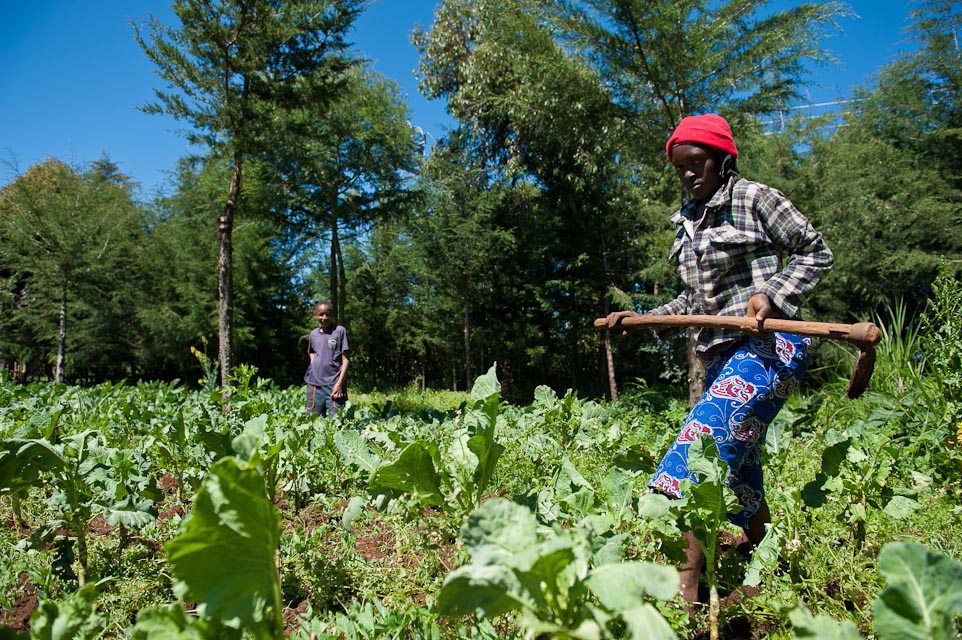
This post originally appeared on Solid Ground.
By Jennifer Duncan,
Sr. Attorney and Land Tenure Specialist
After 11 years in Seattle, living first in a small urban house and then on a 42-foot boat on Lake Union, my three daughters and I decided to make a big change. We are purchasing and moving to a farm in Snohomish County, about an hour north of the city.
Our farm is small, just ten acres, but the land is rich and we hope to coax from it the best variety of fruit and vegetable crops we can — berries, orchard trees, and a variety of greens, tomatoes, peppers, and squash. Our land lies in an elbow of the Stillaguamish, a glacier-fed river flowing from the snowy peaks of the Cascades to the tidal flats of Puget Sound.
We are moving north to make an intentional change of lifestyle, creating a rural hub for family, friends, and community, taking up an opportunity to model small farm best practices and innovations both near and far.
I have spent most of my career as a lawyer working for the international non-profit Landesa, advocating for secure land rights for small farmers. In this capacity I’ve interviewed small farmers around the world, visiting their farms, learning from them about farming cycles, challenges, and adaptation.
I have noted, in recent years, how many farmers talk about disrupted weather patterns — seasonal rains delayed or missed completely, floods sweeping away crops and fruit trees, soils depleted.
In many places in Africa families have up and moved away from their drought-hardened land, seeking more fertile soils elsewhere. The men often move first; women stay behind to care for children and draw what food they can out of the land.
In Kenya’s Coast Region, where my research took me this past October, prolonged drought had created a dire situation. In our focus area of Tana River County, parents reported cutting back family meals to one per day, mostly corn mush, and holding children back from school, unable to pay fees for uniforms and books.
“The children who do go to school,” one woman told us, “go too hungry to learn.” Emaciated cattle herds trod slowly through the dusty scrub; a calf lay fallen by the roadside, skin and bones.
In these kinds of situations, becoming increasingly common, some people choose to move, and others stay. Those who stay will continue to rely on the land, for themselves and their children. They will need to be able to make the fullest range of choices possible to keep their land productive as the environment changes.
Under these circumstances, land rights matter. Farmers with secure rights to their land tend to invest in it differently, for long-term stewardship. They are more apt, for example, to plant trees on it, take soil conservation measures, and invest in irrigation methods, and less likely to cut down trees, all of which can contribute to climate change resiliency.
Back in Snohomish County, flooding from the Stillaguamish is predicted to rise due to trends in glacier melt-off. As a farmer on the flood plain, this is of immediate concern. I am exploring different options to keep my land safe from severe floods, and more productive over time.
Thinking through these questions for my own farm has helped me to understand on a more personal level why farmers around the globe need secure land rights to even think about the kinds of creative, longer-term investments that will be required to respond to climate change impacts.
Knowing the land will be mine for the long term gives me a much different outlook on this than I would have as a short-term lessee, or a sharecropper, or if I knew my land might be subject to arbitrary takings or encroachment by the government, commercial business interest, or even my own family member.
These, in fact, are the conditions of tenure insecurity prominent in many parts of the world most affected by climate change. Until this improves, it is difficult to see how farmers will be willing or able to take the kinds of measures necessary to keep their land in production as climate-related challenges rise.
This is not an academic proposition. The lives and futures of many people, and especially children, will depend on whether or not rural communities can stay food secure as climate change impacts intensify.
From my new perspective on the banks of the Stillaguamish, I am more convinced than ever that placing secure land rights in the center of climate change programming is a critical step toward unleashing the innovative potential of small-scale farmers around the world to enhance production, bolster food security, and adapt as necessary to the climate changes that are already well upon us.
Jennifer Duncan is a Sr. Attorney and Land Tenure Specialist for Landesa.
